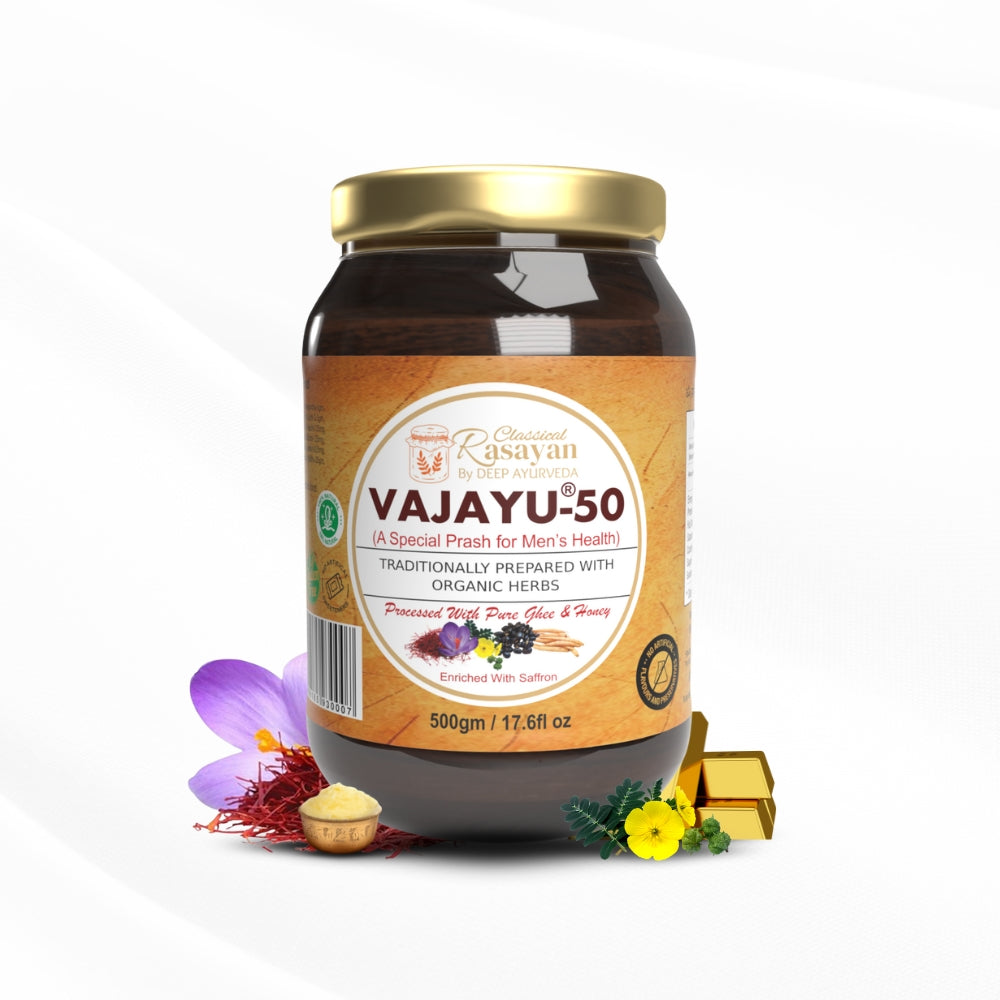Introduction
Diabetes, or Madhumeha in Ayurveda, is not just a modern-day lifestyle disorder—it has been discussed in ancient Ayurvedic texts for thousands of years. Unlike conventional medicine, which focuses primarily on symptom management through medication, Ayurveda addresses diabetes by correcting the root cause—imbalances in the body’s doshas (Vata, Pitta, and Kapha), digestion (Agni), and metabolism (Dhatu function).
In this blog, we’ll explore how Ayurveda understands diabetes and the best herbs and remedies that can help in natural blood sugar control, offering a holistic and sustainable approach to managing the condition.
Understanding Diabetes in Ayurveda
In Ayurvedic philosophy, diabetes is classified under "Prameha", a group of urinary disorders. There are 20 types of Prameha, with Madhumeha being the equivalent of diabetes mellitus. Ayurveda links Madhumeha to a metabolic disturbance caused by the derangement of Kapha dosha and poor digestive fire (Agni), which leads to the formation of Ama (toxins) and improper tissue nourishment.

Two main types of diabetes in Ayurveda:
-
Avarana type (obstruction of channels) – usually seen in Type 2 diabetes.
-
Dhatukshaya type (depletion of tissues) – more aligned with Type 1 diabetes.
Ayurvedic treatment, therefore, focuses on cleansing toxins, improving digestion, strengthening the pancreas, and rejuvenating cells to naturally regulate blood sugar levels.
Best Ayurvedic Herbs for Diabetes Management
1. Gudmar (Gymnema sylvestre) – "The Sugar Destroyer"

Gudmar, meaning "sugar destroyer" in Sanskrit, is a powerful anti-diabetic herb. It helps regenerate beta cells in the pancreas, supports insulin production, and reduces sugar cravings.
-
How it works: It contains gymnemic acids that suppress the taste of sugar and reduce glucose absorption in the intestines.
-
Usage: Can be taken as capsules, powder, or tea.
2. Vijaysar (Pterocarpus marsupium)

Traditionally known as "Miracle Cure for Diabetes", Vijaysar has been used for centuries in Ayurvedic medicine.
Benefits:
-
Reduces blood sugar levels
-
Improves insulin sensitivity
-
Aids in weight management
-
Traditional practice: Drinking water stored overnight in a Vijaysar wooden tumbler.
3. Bitter Gourd (Karela)
Bitter gourd is a natural insulin mimic. It contains charantin, polypeptide-p, and vicine, all of which have blood sugar-lowering effects.
-
Forms: Juice, dried powder, or vegetable in meals.
-
Pro Tip: Drinking 30 ml of fresh karela juice on an empty stomach is a well-known remedy.
4. Fenugreek (Methi)
Fenugreek seeds are rich in soluble fiber and compounds that slow down the absorption of carbohydrates and sugar.
How to use:
-
Soak 1-2 teaspoons of fenugreek seeds overnight and consume them with the water in the morning.
-
Use fenugreek powder in meals or take capsules.
5. Amla (Indian Gooseberry)
Amla is a rejuvenating Rasayana herb known to strengthen the pancreas and reduce oxidative stress in diabetic patients.
-
Rich in: Vitamin C, antioxidants.
Benefits:
-
Regulates carbohydrate metabolism
-
Enhances insulin secretion
-
Reduces complications
6. Turmeric (Haldi)
Turmeric contains curcumin, which has anti-inflammatory, antioxidant, and glucose-lowering properties.
Use:
-
Mix a pinch of turmeric in warm water or milk.
-
Combine with black pepper for better absorption.
7. Neem
Neem leaves are bitter but highly effective in purifying the blood and reducing glucose levels naturally.
Use:
-
Chew 5-10 fresh leaves daily.
-
Neem powder or capsules are also available.
Ayurvedic Remedies and Lifestyle Practices for Natural Blood Sugar Control
Besides herbs, Ayurveda offers daily practices and dietary adjustments that support blood sugar balance.
1. Dinacharya (Daily Routine)
A structured daily routine stabilizes hormones and metabolism.
-
Wake up early (before sunrise)
-
Practice Abhyanga (self-massage) to improve circulation
-
Include light exercise or yoga
2. Yoga and Pranayama
Regular yoga practice improves insulin sensitivity, reduces stress hormones, and enhances pancreatic function.
Best asanas for diabetes:
-
Ardha Matsyendrasana (Spinal twist)
-
Dhanurasana (Bow pose)
-
Paschimottanasana (Seated forward bend)
-
Surya Namaskar
-
Pranayama: Nadi Shodhana and Kapalabhati are excellent for regulating metabolism.
3. Ayurvedic Diet for Diabetes
The Ayurvedic diet focuses on balancing Kapha dosha, which is typically aggravated in diabetic individuals.
Recommended Foods:
-
Whole grains: barley, millet, quinoa
-
Legumes: moong dal, lentils
-
Vegetables: bitter gourd, ash gourd, green leafy vegetables
-
Spices: turmeric, cinnamon, black pepper, ginger
-
Small portions of low glycemic index fruits like Indian gooseberry, jamun, and apple
Avoid:
-
Refined sugar and flour
-
Heavy, oily, and cold foods
-
Dairy in excess (especially curd)
-
Processed and packaged foods
4. Panchakarma Therapies
For chronic or advanced cases, Ayurveda recommends detoxification through Panchakarma treatments:
-
Vamana (therapeutic emesis)
-
Virechana (purgation)
-
Basti (medicated enema)
-
Nasya (nasal administration of medicines)
-
These help cleanse the system, correct metabolism, and rejuvenate internal organs.
Ayurvedic Formulations for Diabetes
Several classical Ayurvedic formulations are known for their anti-diabetic properties:
|
Name |
Description |
|
Nishamalaki Churna |
Amla and turmeric blend for sugar control and immunity |
|
Chandraprabha Vati |
Supports kidney health and urinary tract function |
|
Shilajit |
Natural mineral pitch for rejuvenation and glucose control |
|
Triphala |
Gentle detox, regulates digestion and supports sugar metabolism |
|
Madhumehari Churna |
Herbal powder blend targeted for managing diabetes |
Always consult an Ayurvedic practitioner before starting these formulations, especially if you're already on allopathic medication.
Holistic Benefits of Ayurvedic Diabetes Management
Ayurveda does not just treat blood sugar levels—it aims to improve the entire ecosystem of health in the body. Some of the holistic benefits include:
-
Improved digestion and metabolism
-
Enhanced energy and mental clarity
-
Better sleep and mood stability
-
Reduced risk of diabetic complications (neuropathy, retinopathy, nephropathy)
-
Stronger immune system
Precautions and Final Words
While Ayurveda offers a natural and time-tested path to managing diabetes, it must be used with care and personalization. Every individual has a unique body constitution (Prakriti), and treatment should be tailored accordingly.
Tips to Follow:
-
Always consult an Ayurvedic doctor for customized treatment.
-
Monitor blood sugar levels regularly.
-
Do not abruptly stop allopathic medications.
-
Combine Ayurvedic remedies with proper diet and exercise.
Conclusion
Ayurveda offers a deep and integrative approach to managing diabetes by correcting imbalances, detoxifying the body, and nourishing the tissues. With the right herbs like Gudmar, Vijaysar, Amla, and Fenugreek, and lifestyle practices such as yoga, diet control, and Panchakarma, it is possible to keep your blood sugar levels under control—naturally and holistically.
Let Ayurveda be your guide toward a balanced, healthier, and diabetes-free life.







